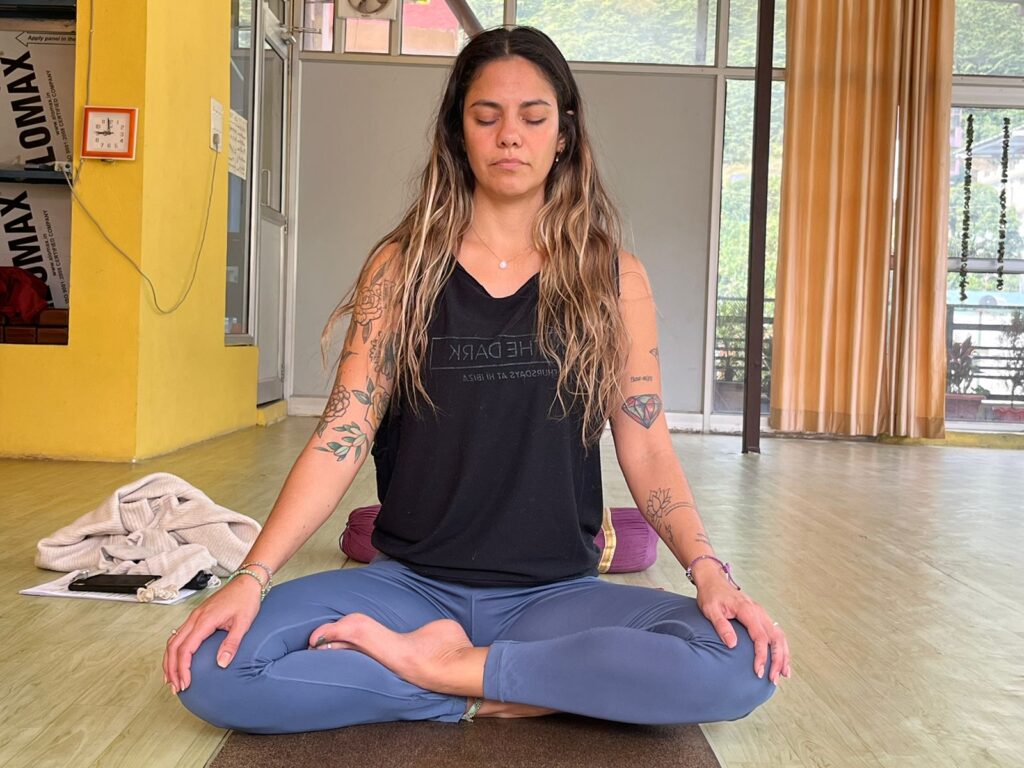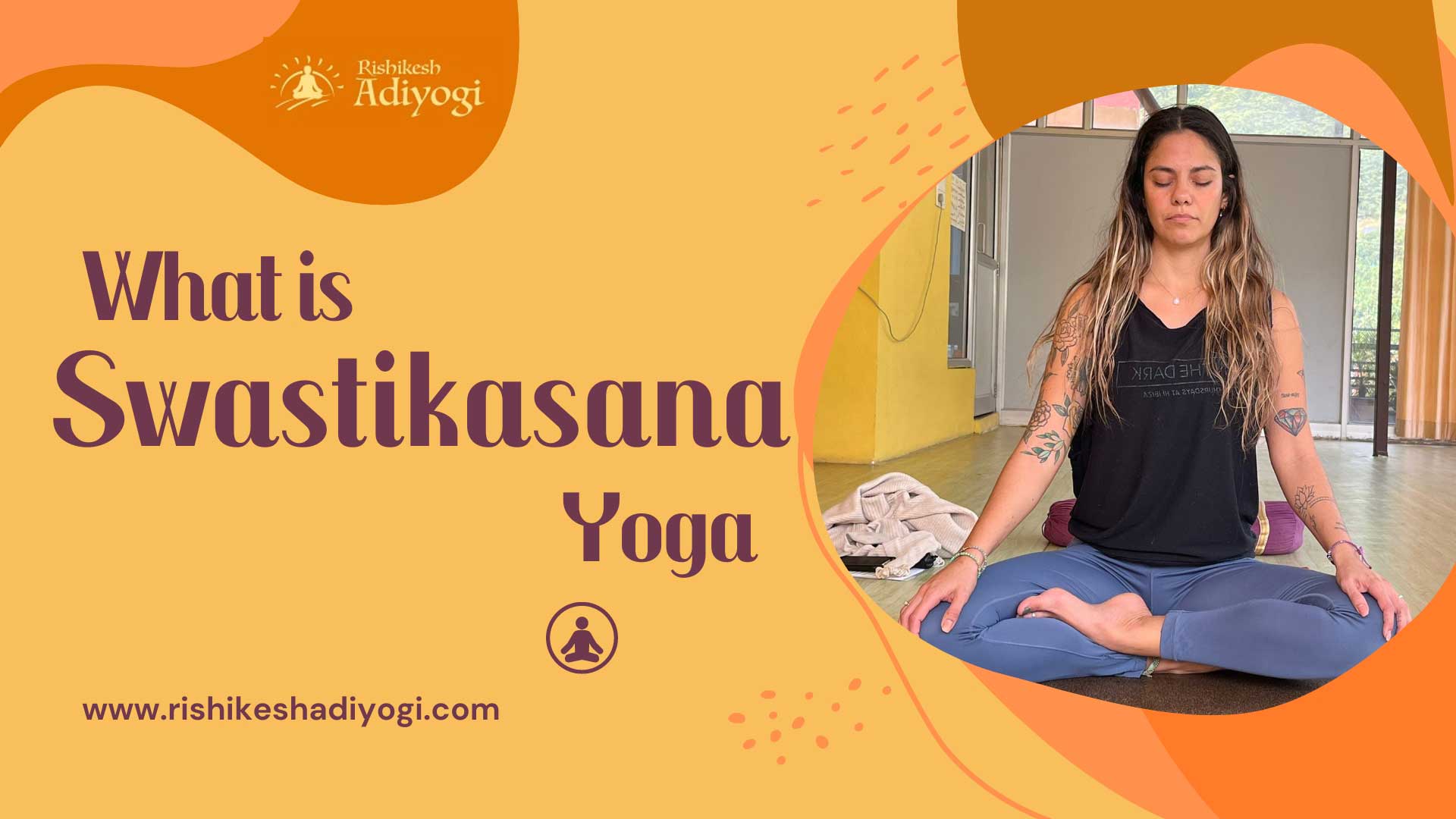What is Swastikasana Yoga | Steps & Benefits
The practice of Swastikasana Yoga, an ancient fitness and wellness discipline rooted in Indian philosophy, is rapidly gaining global popularity. Over the past few decades, there has been a significant surge in the practice of Yoga, cutting across cultures and geographies.
Yoga helps to strengthen the body, improve alertness and agility, and create a harmony between the body and mind that improves overall wellness and well-being. However, Yoga is much more than maintaining wellness because it helps individuals to elevate their inner-self and attain enlightenment.
The essence of Yoga is to attain a stage in life when a person unites with the inner self with a perfectly disciplined mind that rids them of all desires and connects them to the core of their existence. Although such high accomplishment is the ultimate goal of Yoga, at a basic level, its health benefits are most visible that attract people towards it.
Swastikasana Yoga – A Way of Living

Yoga is the practice of healthy living by working towards the enrichment of the mind while maintaining a healthy body. According to Indian philosophy, human existence comprises physical, mental, and spiritual elements.
To enjoy a healthy and happy life, it is essential to maintain the perfect harmony between these elements by practicing Yoga. Yoga is the only form of exercise that can help overall human development instead of just focusing on physical well-being.
Yogic exercises or asanas infuse cosmic energy into the body that improves physical health through self-healing. It removes negativity from the mind and toxins from the body.
Yoga calms the mind by reducing stress, increases self-awareness which boosts personal power, and offers various health benefits.
Increased focus and concentration are the other benefits of Yoga that make people more confident about their bodies and mind.
Yoga ensures good health by taking good care of the musculoskeletal systems and other organs of the body while lowering various risks of sickness. People of all ages can practice Yoga.
This article is about Swastikasana and its benefits. The asana is easy to perform, and from children to adults and the elderly, everyone can do it. It is especially helpful for those who find it difficult to perform Padmasana and Siddhasana.
What is Swastikasana?
Swastikasana derives its name from the word Swastika, an Indian Symbol of auspiciousness, good luck, and spirituality. The word Swastika has its origins in the Sanskrit word ‘svastika’, which means well-being or good fortune that leads to prosperity.
The symbol that originated thousands of years ago remains highly reverent even today. Swastikasana yoga is a wonderful meditative Yoga position or asana that keeps people grounded, humble, and earthly. The asana ,known as the Auspicious pose because of its name, is an alternative to Padmasana or the Lotus Pose that boots meditation and concentration. Those who practice Siddhasana can elevate themselves to Swastikasana, an advanced version of what they have been practicing. People who face difficulty performing classical poses or asanas would find Swastikasana most suited. Spreading the legs at a specific position while keeping the body stable helps perform the asana that helps to activate the Muladhara Chakra or Root Chakra and the Ajna Chakra or Third Eye.
How to do Swastikasana
- Sit erect on the ground in the staff pose of Dandasana with legs spread in the front with a gap of 1.5 feet between them.
- Bend your left leg and place the sole flatly on the inner thigh of your right leg.
- Next, bend your right leg and place the sole in the space between the thigh and calf muscles of the left leg. However, ensure that the right leg does not touch the pubis.
- Keep your knees firmly grounded to the floor, the body and back should be erect, and position the head and neck along the same line.
- Make necessary adjustments to feel comfortable in the position and maintain sanctity.
- Place your hands on the knees to create the jnana mudra or chin mudra.
- Keep your spine firm and erect while doing the asana without overextending.
- While in the position, start slow breathing and maintain it normally.
- Keep the body relaxed while feeling comfortable sitting in the pose for 10 minutes. However, do not try to achieve the pose forcefully.
- Concentrate your mind and draw attention to the tip of the nose or at the center of the eyebrows to meditate and gain control over your mind.
Benefits of Swastikasana
Swastikasana benefits are many, and like most asanas, it contributes to the betterment of physical and mental health.
Improves Concentration – Since the asana involves meditation practicing it daily improves the concentration level. When performing the asana, you become more conscious about yourself while staying fully aware of your surroundings.
Staying detached from the environment helps to control the mind better as you can fully feel your existence within the environment.
Improves Immunity –Swastikasana aids meditations (Dhyana) and breathing exercises (Pranayama), thereby helping to improve immunity. Breathing exercises as part of the asana help to improve lung capacity and clear the sinus passage, thereby eliminating headaches and migraines.
Healthy eyes – Practicing the pose daily reduces eye strain and helps to maintain smooth vision.
Boosts Organ Functioning – Since the upper part of the body or torso remains firmly stretched when performing the asana, it allows the body organs sufficient space to function optimally and efficiently. When the organs function efficiently, it improves the overall efficiency of the body systems that ensure good health.
Better spinal health
Since the backbone remains erect during the asana, it significantly improves the alignment of the spinal cord, which ensures a steady and stable musculoskeletal system that reduces body aches and pain. It makes the groin and hip joints supple and reduces inflammation of the veins in the legs.
Better spinal health means a rejuvenated nervous system that ensures the efficient functioning of the body parts.
Swastikasana yoga broadens the chest and collar bones and relieves the muscles from stress improving agility and easing movements. Most importantly, regular practice of the asana eliminates the threats of several diseases.




